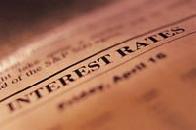
 |
|
| Financial Terms | |
| dividend growth method |
|
Information about financial, finance, business, accounting, payroll, inventory, investment, money, inventory control, stock trading, financial advisor, tax advisor, credit.
Main Page: credit, stock trading, investment, finance, tax advisor, accounting, financial, financial advisor, Also see related: credit, homebuyer, real estate, homebuying, home insurance, mortgage, homes, financing, condo, |
Definition of dividend growth method
dividend growth methoda method of computing the cost
Related Terms:Capitalization methodA method of constructing a replicating portfolio in which the manager purchases a Cash dividendA dividend paid in cash to a company's shareholders. The amount is normally based on Constant-growth modelAlso called the Gordon-Shapiro model, an application of the dividend discount Cum dividendWith dividend. Cumulative dividend featureA requirement that any missed preferred or preference stock dividends be paid Current rate methodUnder this currency translation method, all foreign currency balance-sheet and income Direct estimate methodA method of cash budgeting based on detailed estimates of cash receipts and cash  Discounted dividend model (DDM)A formula to estimate the intrinsic value of a firm by figuring the DividendA dividend is a portion of a company's profit paid to common and preferred shareholders. A stock Dividend clawbackWith respect to a project financing, an arrangement under which the sponsors of a project Dividend clienteleA group of shareholders who prefer that the firm follow a particular dividend policy. For Dividend discount model (DDM)A model for valuing the common stock of a company, based on the Dividend growth modelA model wherein dividends are assumed to be at a constant rate in perpetuity. Dividend limitationA bond covenant that restricts in some way the firm's ability to pay cash dividends. Dividend payout ratioPercentage of earnings paid out as dividends. Dividends per shareAmount of cash paid to shareholders expressed as dollars per share.  Dividend policyAn established guide for the firm to determine the amount of money it will pay as dividends. Dividend rateThe fixed or floating rate paid on preferred stock based on par value. Dividend reinvestment plan (DRP)Automatic reinvestment of shareholder dividends in more shares of a Dividend rightsA shareholders' rights to receive per-share dividends identical to those other shareholders receive. Dividend yield (Funds)Indicated yield represents return on a share of a mutual fund held over the past 12 Dividend yield (Stocks)Indicated yield represents annual dividends divided by current stock price. Dividends per sharedividends paid for the past 12 months divided by the number of common shares Extra or special dividendsA dividend that is paid in addition to a firm's "regular" quarterly dividend. Ex-dividendThis literally means "without dividend." The buyer of shares when they are quoted ex-dividend Ex-dividend dateThe first day of trading when the seller, rather than the buyer, of a stock will be entitled to Flow-through methodThe practice of reporting to shareholders using straight-line depreciation and  Growth managerA money manager who seeks to buy stocks that are typically selling at relatively high P/E Growth opportunityOpportunity to invest in profitable projects. Growth phaseA phase of development in which a company experiences rapid earnings growth as it produces Growth ratesCompound annual growth rate for the number of full fiscal years shown. If there is a negative Growth stockCommon stock of a company that has an opportunity to invest money and earn more than the Homemade dividendSale of some shares of stock to get cash that would be similar to receiving a cash dividend. Indicated dividendTotal amount of dividends that would be paid on a share of stock over the next 12 months Internal growth rateMaximum rate a firm can expand without outside source of funding. growth generated Log-linear least-squares methodA statistical technique for fitting a curve to a set of data points. One of the Liquidating dividendPayment by a firm to its owners from capital rather than from earnings. Monetary / non-monetary methodUnder this translation method, monetary items (e.g. cash, accounts Net present value of growth opportunitiesA model valuing a firm in which net present value of new Normalizing methodThe practice of making a charge in the income account equivalent to the tax savings Perfect market view (of dividend policy)Analysis of a decision on dividend policy, in a perfect capital Present value of growth opportunities (NPV)Net present value of investments the firm is expected to make Purchase methodAccounting for an acquisition using market value for the consolidation of the two entities' Residual dividend approachAn approach that suggests that a firm pay dividends if and only if acceptable Residual methodA method of allocating the purchase price for the acquisition of another firm among the Signaling view (on dividend policy)The argument that dividend changes are important signals to investors Simple compound growth methodA method of calculating the growth rate by relating the terminal value to Special dividendAlso referred to as an extra dividend. dividend that is unlikely to be repeated. Statement-of-cash-flows methodA method of cash budgeting that is organized along the lines of the statement of cash flows. Stock dividendPayment of a corporate dividend in the form of stock rather than cash. The stock dividend Sustainable growth rateMaximum rate of growth a firm can sustain without increasing financial leverage. Tax differential view ( of dividend policy)The view that shareholders prefer capital gains over dividends, Temporal methodUnder this currency translation method, the choice of exchange rate depends on the Traditional view (of dividend policy)An argument that "within reason," investors prefer large dividends to With dividendPurchase of shares in which the buyer is entitled to the forthcoming dividend. Related: exdividend. DividendA payment a company makes to stockholders. Earnings before income tax. The profit a company made DividendThe payment of after-tax profits to shareholders as their share of the profits of the business for an accounting period. Allowance methodA method of adjusting accounts receivable to the amount that is expected to be collected based on company experience. Direct methodA method of preparing the operating section of the Statement of Cash Flows that uses the company’s actual cash inflows and cash outflows. Direct write-off methodA method of adjusting accounts receivable to the amount that is expected to be collected by eliminating the account balances of specific nonpaying customers. Dividend incomeIncome that a company receives in the form of dividends on stock in other companies that it holds. DividendsAmounts paid to the owners of a company that represent a share of the income of the company. Indirect methodA method of preparing the operating section of the Statement of Cash Flows that does not use the company’s actual cash inflows and cash outflows, but instead arrives at the net cash flow by taking net income and adjusting it for noncash expenses and the changes from last year in the current assets and current liabilities. dividend payout ratioComputed by dividing cash dividends for the year dividend yield ratioCash dividends paid by a business over the most algebraic methoda process of service department cost allocation direct methoda service department cost allocation approach FIFO method (of process costing)the method of cost assignment that computes an average cost per equivalent growth ratean estimate of the increase expected in dividends high-low methoda technique used to determine the fixed judgmental method (of risk adjustment)an informal method of adjusting for risk that allows the decision maker method of least squaressee least squares regression analysis method of neglecta method of treating spoiled units in the modified FIFO method (of process costing)the method of cost assignment that uses FIFO to compute a cost per net present value methoda process that uses the discounted risk-adjusted discount rate methoda formal method of adjusting for risk in which the decision maker increases the rate used for discounting the future cash flows to compensate for increased risk simplex methodan iterative (sequential) algorithm used to solve multivariable, multiconstraint linear programming problems six-sigma methoda high-performance, data-driven approach to analyzing and solving the root causes of business problems step methoda process of service department cost allocation strict FIFO method (of process costing)the method of cost assignment that uses FIFO to compute a cost per equivalent unit and, in transferring units from a department, keeps the weighted average method (of process costing)the method of cost assignment that computes an average cost per Bootstrapping, bootstrap methodAn arithmetic method for backing an DividendA payment made to shareholders that is proportional to the number of shares First in, first-out costing method (FIFO)A process costing methodology that assigns the earliest Moving average inventory methodAn inventory costing methodology that calls for the re-calculation of the average cost of all parts in stock after every purchase. Payback methodA capital budgeting analysis method that calculates the amount of Purchase methodAn accounting method used to combine the financial statements of cash dividendPayment of cash by the firm to its shareholders. constant-growth dividend discount modelVersion of the dividend discount model in which dividends grow at a constant rate. dividendPeriodic cash distribution from the firm to its shareholders. dividend discount modelComputation of today’s stock price which states that share value equals the present value of all expected future dividends. dividend payout ratioPercentage of earnings paid out as dividends. ex-dividend dateDate that determines whether a stockholder is entitled to a dividend payment; anyone holding stock before this date is entitled to a dividend. information content of dividendsdividend increases send good news about cash flow and earnings. dividend cuts send bad news. internal growth rateMaximum rate of growth without external financing. MM dividend-irrelevance propositionTheory that under ideal conditions, the value of the firm is unaffected by dividend policy. present value of growth opportunities (PVGO)Net present value of a firm’s future investments. stock dividendDistribution of additional shares to a firm’s stockholders. sustainable growth rateSteady rate at which a firm can grow without changing leverage; plowback ratio × return on equity. Related to : financial, finance, business, accounting, payroll, inventory, investment, money, inventory control, stock trading, financial advisor, tax advisor, credit. |